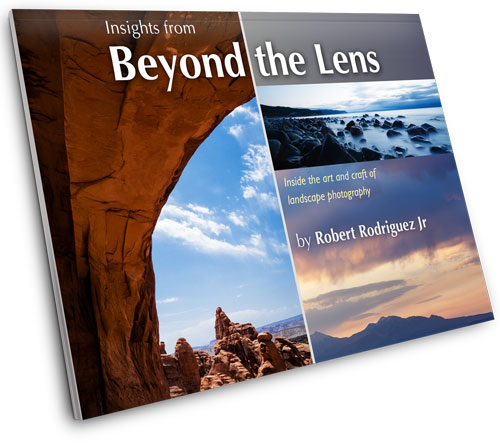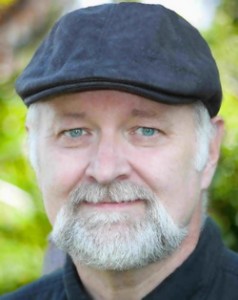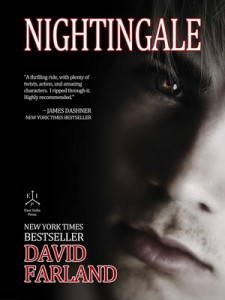PHOTOGRAPHERS. Photographer Robert R. Rodriguez Jr. has published a gorgeous 45-page e-book on the “Art and Craft of Landscape Photography.” Drawing on his real-world experiences as a landscape photographer, instructor, speaker, and blogger, he presents a holistic approach to capturing evocative images.
You can download “The Art and Craft of Landscape Photography” either as a traditional PDF or enjoy it as an interactive iBook on your iPad. He is making the book available free for a limited time.
I immediately downloaded both versions of the book so I could compare the reading experiences. But I also knew that Robert would venture off the beaten path of traditional photography books. When I interviewed Robert a few years ago, I was inspired by his commitment to living the life of a creative professional on his own terms. He is very good at his craft, and conveys it in everything he does—whether it’s his blog posts, seminars, or this book. Unlike e-books that appear to be dashed off in a matter of days (or hours!), this book is noticeably different.
“My goal was to take the best of what I have shared on the Beyond the Lens blog over the past few years and present it in an easier-to-read format,” explains Robert.
And yes, the book does talk about photography gear and technique. But Robert also discusses some psychological limitations that prevent creative professionals from pursuing their passions.
He explains why becoming a professional photographer is not a pre-requisite for making successful images, but says he is often asked about the challenges of becoming a full-time photographer.
“My core belief is that only you can determine what you are capable of, and no one can or should tell you otherwise. IF you have the determination and stamina, then yes, you can become a professional in whatever field you choose, including photography,” writes Rodriguez. “Will it be difficult and challenging? I can tell you it is the hardest thing I have ever done. But so what? I am having a blast, and I am doing what I love.”
In his e-book, Rodriguez examines the motivation, passion, and vision involved in successful landscape photography. He describes how several images were made, shows what he learned from failed images, and talks about how he draws inspiration from the Hudson River School of painters. The book also includes recommended resources and gear he regards as “top investments” for nature photographers.
The interactive iBook version contains full-screen views of all the images (compatible with Retina display), interactive galleries, and two videos.
If you haven’t yet read a photography iBook on your iPad yet, Robert includes a short video that shows you how to enjoy the interactive features to the fullest. To download the iBooks edition from Apple’s iBook Store, you will need an iPad (any version) and the free iBooks app.
LINKS




